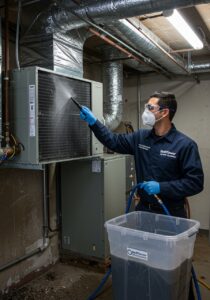
Moving into a new home should feel exciting — not overwhelming. Between boxes, paperwork, and organizing your space, the last thing you need is utility setup turning into a confusing chore. Yet, without electricity, water, internet, or gas ready to go, your dream home can quickly become uncomfortable.
Fortunately, setting up utilities doesn’t have to be stressful. With a little planning and the right steps, you can get everything connected smoothly, so you can focus on settling in and making memories. Here’s a step-by-step guide to setting up utilities in a new home — minus the stress.
1. Start Planning Before You Move
The biggest stressor with utility setup is waiting too long. Ideally, you should begin the process 2 to 3 weeks before your move-in date.
Why so early? Some utility providers — especially internet and gas — require technician appointments, which book up fast. Planning ahead gives you more flexibility in scheduling and helps avoid last-minute headaches.
Checklist of Utilities to Set Up:
-
Electricity
-
Gas (if applicable)
-
Water and sewer
-
Trash and recycling
-
Internet and cable
-
Home security (optional)
-
Renter’s or homeowner’s insurance
2. Find Out What’s Already Set Up
Before making calls, check if any utilities are already active or covered by the landlord or previous homeowner. In some cases:
-
Water and trash might be managed by the city and require no action.
-
Apartment complexes may include certain utilities in the rent.
-
Internet infrastructure may already be installed with limited provider options.
Tip: Ask the property manager, landlord, or real estate agent what’s already connected and what needs your attention.
3. Research Local Utility Providers
Not every home has the same utility options. You’ll need to find out which providers service your specific address, especially for electricity, gas, and internet.
Where to look:
-
City or county utility websites
-
Utility provider locators online
-
Neighbors or community forums
-
Your realtor or landlord’s recommendations
Compare rates, service reviews, contract lengths, and installation fees before committing. If you’re moving into a deregulated energy market, you may have multiple electric and gas providers to choose from.
4. Contact Providers and Schedule Service Activation
Once you’ve chosen your providers, it’s time to call or go online to set up your accounts. Most companies will ask for:
-
Your full name
-
Move-in date
-
New address
-
Contact info (phone, email)
-
Social Security Number or valid ID
-
A deposit or credit check
Pro Tip: Schedule your services to be activated the day before you move in. That way, everything is already working when you arrive, and you won’t have to unpack in the dark or without Wi-Fi.
5. Set Up Online Accounts and Autopay
Once your utilities are scheduled, it’s a good idea to create online accounts with each provider. This allows you to:
-
View and pay bills
-
Monitor usage
-
Get outage updates or service notices
-
Set up autopay to avoid missing due dates
Many companies also offer paperless billing and mobile apps for convenience — take advantage of those early to keep things organized.
6. Take Meter Readings on Move-In Day
When you walk into your new home, one of your first tasks should be to take photos of all utility meters: electric, gas, and water.
Why? It documents your starting usage and protects you from being billed for the previous occupant’s consumption.
Also check:
-
That water flows properly (no leaks)
-
Lights and outlets are working
-
Heat/AC is functioning
-
Internet speeds are what was promised
If anything is wrong, contact the provider immediately for support or troubleshooting.
7. Don’t Forget Trash and Recycling Services
Trash is one of the most commonly forgotten utilities, especially in single-family homes or new neighborhoods. Depending on your area, you may need to:
-
Contact the local public works department
-
Sign up with a private waste removal company
-
Request bins or find out the pickup schedule
Start this process early to avoid a pileup of boxes and moving materials outside your door.
8. Budget for Your Monthly Utility Costs
Now that utilities are live, be mindful of your monthly usage and expenses. Your first few bills might vary — especially if you move in during a seasonal peak (like summer cooling or winter heating).
Keep track of:
-
Due dates for each provider
-
Which utilities fluctuate month-to-month
-
Whether you’re eligible for energy-saving discounts or programs
If you’re on a tight budget, ask providers about flat-rate plans or budget billing, which spread usage costs evenly across the year.
9. Set Reminders for Regular Maintenance
Utility setup isn’t a one-time task. To keep everything running smoothly:
-
Replace HVAC filters every 1–3 months
-
Schedule annual plumbing or water heater inspections
-
Check for leaks or unusual usage
-
Test smoke detectors and carbon monoxide alarms
These small tasks prevent big bills and keep your home safe and efficient.

10. Consider Using a Utility Concierge Service (Optional)
If juggling all this sounds overwhelming — or you’re short on time — many people turn to utility concierge services. These services help:
-
Set up multiple utilities at once
-
Compare providers
-
Schedule activations
-
Manage account transfers
This hands-off option can be especially useful for first-time homeowners or renters moving to a new city.
Final Thoughts
Setting up utilities may not be the most glamorous part of moving, but it’s one of the most important. A little planning goes a long way toward making your new house feel like home — with lights on, warm showers, and a working internet connection from day one.
By starting early, staying organized, and taking proactive steps, you can avoid the stress and settle in with confidence. After all, moving is a fresh start — and your utilities should support that transition, not complicate it.







